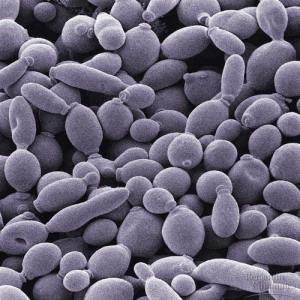Who’s afraid of autolysis?
Beautiful little creatures aren’t they?
This is ale yeast. This is what gives an ale its distinctive flavor… and these little beasties have been sitting in my secondary fermenter for the past 371 days.
I didn’t start off wanting to see if you could keep a beer on the secondary for that long – I had originally planned a 6 week fermentation on the secondary just to see what would happen. At the six week mark, I realized that I had no free keg space in my kegerator – so I decided to let it sit.
Once I had room, there were other recipes to brew and I pretty much forgot about this 5 gallons of potential gut-wrenching ale that had been sitting in my temperature controlled fermentation room. Around the 6 month mark, I decided to check the progress:
- No visible infection
- No rotten egg smell
- Strong yeast cake
I had planned on kegging a few days later, but ended up getting sidetracked (damn you real life and all of it’s foibles).
A few more weeks passed – I checked the brew, everything seemed to be going well. Waited another couple of weeks, no change.
By this point, this batch had become more than just a simple ale I brewed because of some extra grain and hops I had leftover from a big brew-day – it had become my Godot. At this point, I decided to let it go for a full year.
Over the next few months I kept the temperature under control, made sure the airlocks were still in place, kept the lights off – but otherwise left it alone. Until this afternoon.
I gently removed the airlock, and the rush of a freshly opened mellow ale enveloped me. The aroma was incredible. Delicately as possible, I placed a sterilized siphon and pulled a small dram of the golden ale. After about a 2 minute wait, I brought the elixir up to my mouth; expecting either true homebrew nirvana or a gut-wrenching vileness that could possibly stop me from ever drinking another beer.
It tasted like an ale. That’s it. Not the milk of paradise… and definitely no hint of the dreaded autolysis. Autolysis is a scary word for the homebrew community. Basically autolysis occurs when the yeast die off and rupture, releasing “off-flavors” into the beer. As long as you maintain a healthy brew system and watch temperature control, autolysis will rarely (never say never) affect your brew. While this project may have actually started due to procrastination, it actually has become a lesson in biology.
I am kegging it this weekend.

